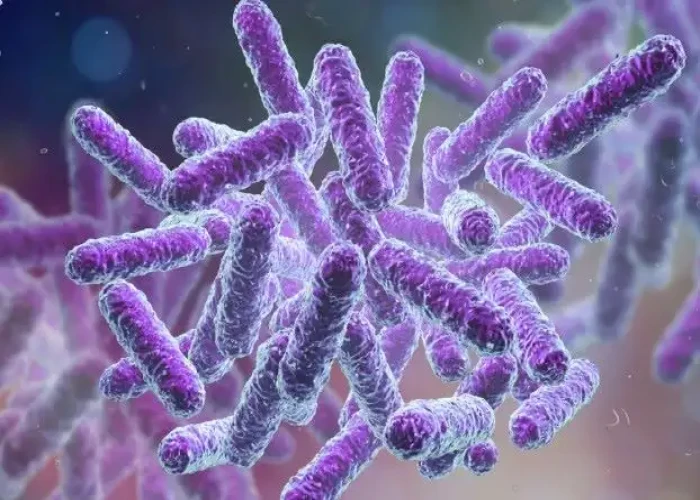 Welcome
Welcome
“May all be happy, may all be healed, may all be at peace and may no one ever suffer."
Salmonella infection

Salmonella infection, also known as salmonellosis, is a type of bacterial infection that can affect the intestinal tract and sometimes other parts of the body. Salmonella bacteria can be found in contaminated food, water, soil, and surfaces, and can cause illness when ingested.
Symptoms of salmonella infection may include diarrhea, fever, abdominal cramps, nausea, vomiting, and headache. These symptoms typically appear within 6-72 hours after exposure to the bacteria, and can last for 4-7 days.
Most cases of salmonella infection can be treated with supportive care, such as rest, hydration, and over-the-counter medications to relieve symptoms. Antibiotics may be prescribed for severe or prolonged infections, or for people who are at high risk for complications, such as infants, elderly adults, and people with weakened immune systems.
Prevention of salmonella infection involves proper food handling and preparation, including washing hands and surfaces frequently, cooking food to appropriate temperatures, and avoiding cross-contamination between raw and cooked foods. It is also important to practice good hygiene, such as washing hands frequently, particularly after using the bathroom or handling animals.
In some cases, salmonella infection can lead to more severe complications, such as dehydration, sepsis, and reactive arthritis. If symptoms persist or worsen, medical attention should be sought immediately.
Research Papers
Disease Signs and Symptoms
- Nausea or vomiting
- Abdomen cramps
- Diarrhea
- Fever
- Fever and chills
- Headaches
- Blood in stool
Disease Causes
Salmonella infection
Salmonella bacteria live in the intestines of people, animals and birds. Most people are infected with salmonella by eating foods that have been contaminated by feces. Commonly infected foods include:
- Raw meat, poultry and seafood. Feces may get onto raw meat and poultry during the butchering process. Seafood may be contaminated if harvested from contaminated water.
- Raw eggs. While an egg's shell may seem to be a perfect barrier to contamination, some infected chickens produce eggs that contain salmonella before the shell is even formed. Raw eggs are used in homemade versions of mayonnaise and hollandaise sauce.
- Fruits and vegetables. Some fresh produce, particularly imported varieties, may be hydrated in the field or washed during processing with water contaminated with salmonella. Contamination also can occur in the kitchen, when juices from raw meat and poultry come into contact with uncooked foods, such as salads.
The Food and Drug Administration also indicates that some salmonella outbreaks have been traced to contaminants in spices. The agency is seeking ways to increase the safety of spices.
Many foods become contaminated when prepared by people who don't wash their hands thoroughly after using the toilet or changing a diaper. Infection also can occur if you touch something that is contaminated, including pets, especially birds and reptiles, and then put your fingers in your mouth.
Disease Prevents
Salmonella infection
The Department of Agriculture has created a Salmonella Action Plan, which involves updating the poultry slaughter inspection system and enhancing sampling and testing programs for poultry and meat. The plan's purpose is to cut the number of salmonella infections in the United States.
You can also take care to avoid spreading bacteria to others. Preventive methods are especially important when preparing food or providing care for infants, older adults and people with weakened immune systems. Be sure to cook food thoroughly and refrigerate or freeze food promptly.
Wash your hands
Washing your hands thoroughly can help prevent the transfer of salmonella bacteria to your mouth or to any food you're preparing. Wash your hands after you:
- Use the toilet
- Change a diaper
- Handle raw meat or poultry
- Clean up pet feces
- Touch reptiles or birds
Keep things separate
To prevent cross-contamination:
- Store raw meat, poultry and seafood away from other foods in your refrigerator
- If possible, have two cutting boards in your kitchen — one for raw meat and the other for fruits and vegetables
- Never place cooked food on an unwashed plate that previously held raw meat
Avoid eating raw eggs
Cookie dough, homemade ice cream and eggnog all contain raw eggs. If you must consume raw eggs, make sure they've been pasteurized.
Disease Treatments
Medications
Because salmonella infection can be dehydrating, treatment focuses on replacing fluids and electrolytes. Severe cases may require hospitalization and fluids delivered directly into a vein (intravenous). In addition, your doctor may recommend:
- Anti-diarrheals. Medications such as loperamide (Imodium A-D) can help relieve cramping, but they may also prolong the diarrhea associated with salmonella infection.
- Antibiotics. If your doctor suspects that salmonella bacteria have entered your bloodstream, or if you have a severe case or a compromised immune system, he or she may prescribe antibiotics to kill the bacteria. Antibiotics are not of benefit in uncomplicated cases. In fact, antibiotics may prolong the period in which you carry the bacteria and can infect others, and they can increase your risk of relapse.
Disease Diagnoses
Disease Allopathic Generics
Disease Ayurvedic Generics
Disease Homeopathic Generics
Disease yoga
Salmonella infection and Learn More about Diseases

Ganglion cyst

Patent ductus arteriosus (PDA)

Exercise headaches

Costochondritis

Hyperthyroidism (Overactive Thyroid)

Sleep apnea

Vasculitis

MCAD deficiency
salmonella infection, সালমোনেলা সংক্রমণ
To be happy, beautiful, healthy, wealthy, hale and long-lived stay with DM3S.
